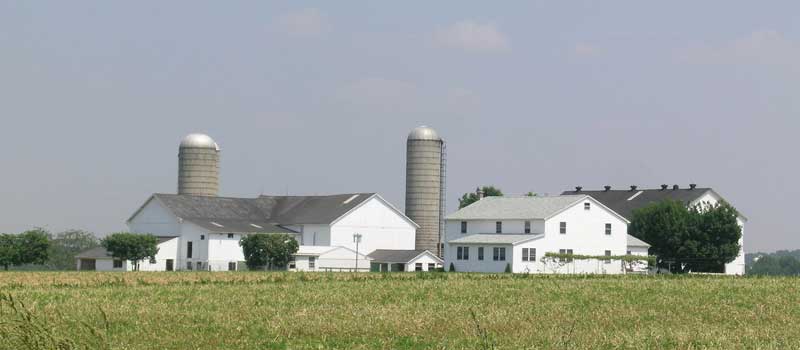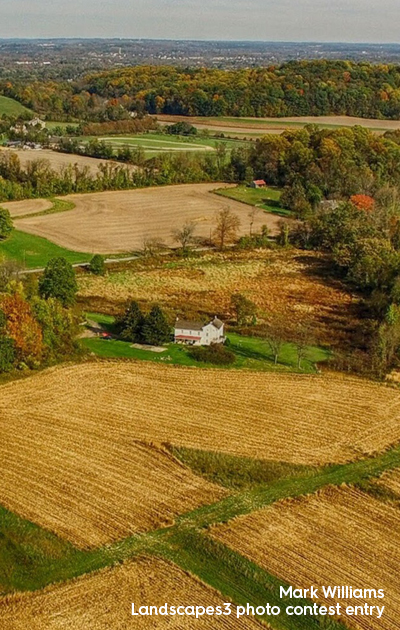Effective agricultural zoning, or agricultural preservation zoning, encourages farming where it is a primary land use while discouraging uses that are incompatible with agricultural operations.
How it Works
Agriculture is protected by specific zoning regulations designed to promote agricultural activities and structures while limiting non-agricultural land uses such as dwellings and other activities that can compete for productive farmland. This tool is most effective when it is applied to areas where local agricultural operations dominate the landscape and economy. Agricultural zoning is most appropriately used in the agricultural and rural landscapes where there are larger concentrations of agricultural uses.
Benefits
Sustainability of the Agricultural Industry
Encourages the maintenance of a critical mass of farmland necessary to the vitality of the agricultural community and to support agricultural operations.
Efficient Use of Land
Redirects non-agricultural development to more appropriate areas with public utilities and discourages the costly extension of roads, water, sewer and other utilities.
Financial Benefits
Helps to stabilize farmland prices by discouraging land speculation.
Energy Conservation
Reduces energy use by promoting agricultural activities near markets, reduces transportation expense, and limits suburban sprawl.
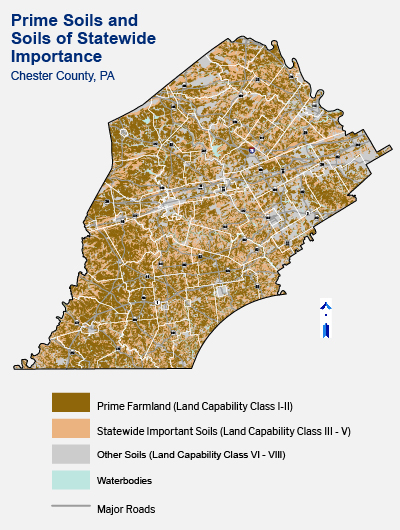
A map of Prime Soils and Soils of Statewide Importance is in the Planning Commission's Map Gallery.
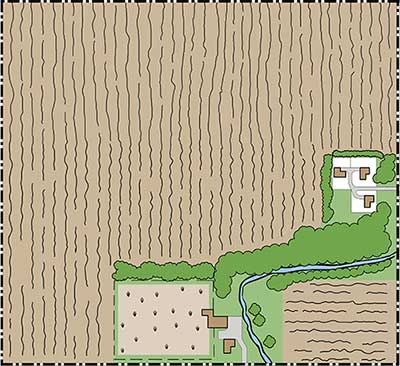
Three new houses on one-acre lots were clustered on this 60-acre farm, preserving the majority of land for agriculture. Source: Return on Environment, the Economic Value of Protected Open Space in Chester County, PA.
Get Started
The protection of agriculture should be supported by the municipal comprehensive plan and justified by demonstrating that the agricultural industry is well established in the area and that prime agricultural soils are a dominant soil type in the municipality. These policies in the comprehensive plan should then be implemented through zoning regulations.
Considerations
Policy Development
The following priorities should be considered when developing supportive agricultural zoning policies:
- The municipality's policy statement should be explicit about protection of agricultural lands, resources and uses, not simply "rural areas."
- Farms should not be regarded as holding areas for future development, but should be considered to be fully-developed as the "highest and best use" of the land.
- Municipalities should ensure that there are adequate areas available for non-agricultural development to meet their "fair share" housing responsibilities.
- Agricultural land use and zoning policies should be created with the input and agreement of farmers.
- Non-agricultural land uses should be strictly limited because of the inherent conflicts between these activities.
- Mapping should identify agricultural areas and prime agricultural soils.
Zoning Regulations
The following priorities should be considered when developing supportive agricultural zoning regulations:
- Agricultural areas on prime soils should be zoned to permit a wide range of normal and customary farming activities, agricultural support business (tractor repair, feed stores, etc.) supplemental/secondary farm businesses (wood shop, beauty parlor, etc.) and other compatible activities.
- Most agricultural zoning ordinances permit limited non-agricultural developments at a ratio of one non-farm lot per 10-25 acres or 1-3 lots on an annual basis with a maximum long-term limit.
- Ordinances should encourage the retention of large agricultural tracts to maximize the efficient use of land. The minimum lot or parent tract size is typically 10-50 acres. Farm operations should be carefully considered to avoid small islands of non-agricultural activities.
- Regulations should recognize that the creation of noise and odors, the application of chemicals, and large and slow-moving machines on roadways are routine elements of agricultural operations. A good practice is to require non-farm subdivisions to carry a map note informing prospective lot purchasers of common farming activities that could be considered as nuisances by non-farmers.
- Non-agricultural lots, such as residential building lots, should be as small as possible (1 to 2 acres) and located on the least-productive soil classes to limit their effects on the adjacent farm. Limitations such as deed restrictions should be placed on these smaller lots to prevent additional subdivision. Some ordinances allow the use of sewage easements that extend past the non-farm lot and into the farm area.
- Non-agricultural developments, particularly residential uses in adjacent zoning districts, should be separated from the agricultural zone by physical distance through appropriate setbacks because routine agricultural practices can have effects that can cause odors, dust or noise to travel over lot lines. The extent and range of non-agricultural uses in the agricultural district should be limited to uses and activities that support agriculture.

Examples
The West Caln Township Zoning Ordinance's Agricultural Preservation District (Article IV) provides for a 10-acre minimum, which may be appropriate for municipalities with smaller agricultural areas.
Elk Township takes a similar approach to agricultural zoning; its zoning ordinance is available from the township.
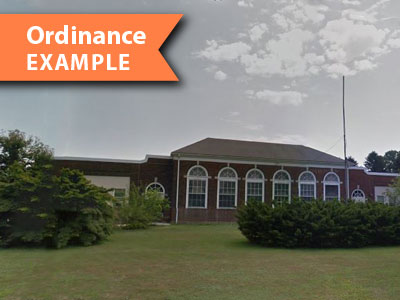
West Fallowfield Township's agricultural zoning district is based in areas where at least 25 percent of the soils are classified as Class 1, 2 or 3 by the United States Department of Agriculture. West Fallowfield also permits limited non-agricultural development based on soil productivity and the size of the agricultural tract; see Article 300
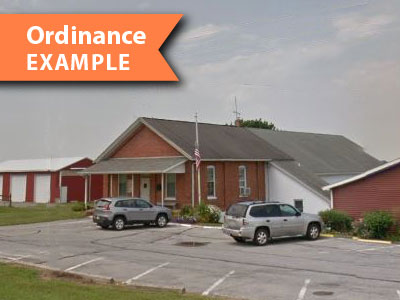
Upper Oxford Township is an example of a municipality that supports its agricultural zoning regulations with policies that are derived from its agricultural resources inventory and plan.

York County offers a guide on zoning to protect rural and agricultural areas.


